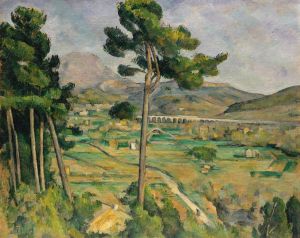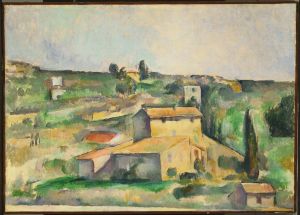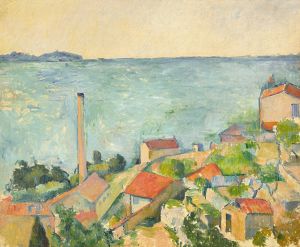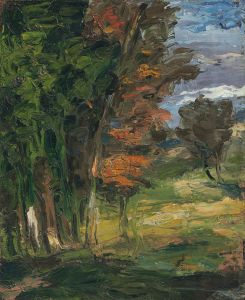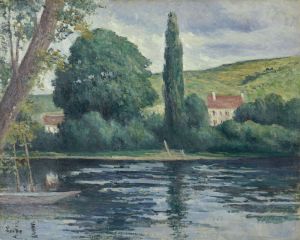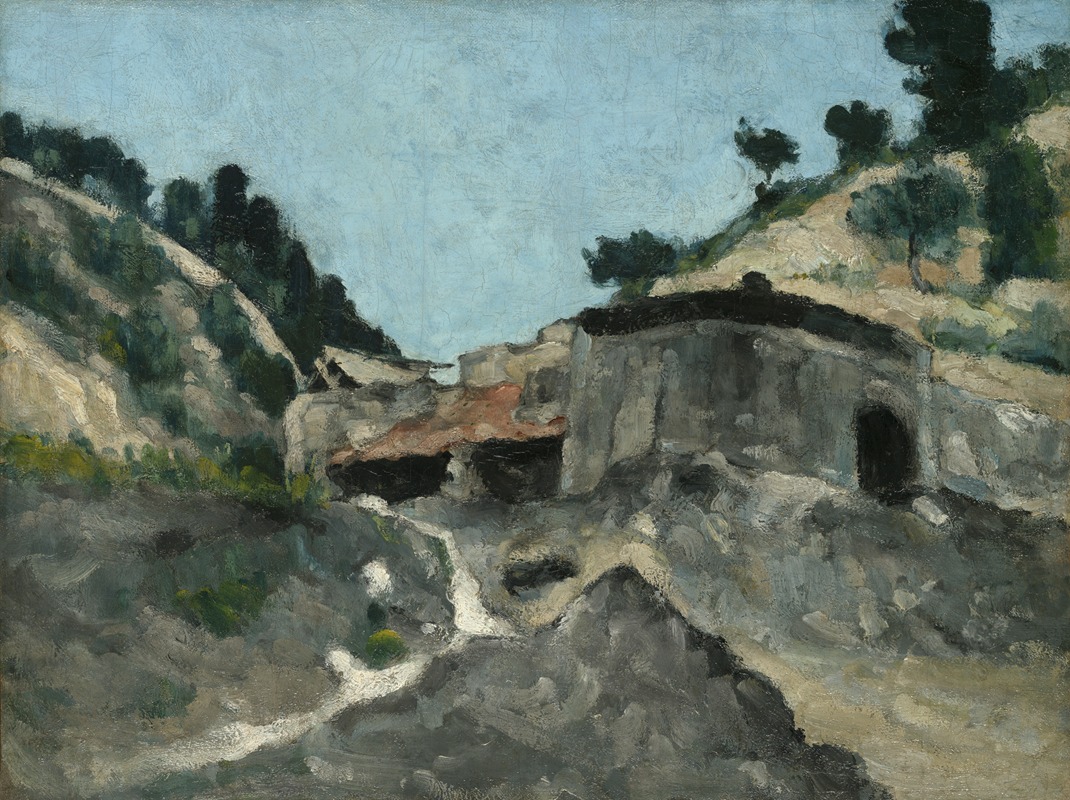
Landscape with Water Mill
A hand-painted replica of Paul Cézanne’s masterpiece Landscape with Water Mill, meticulously crafted by professional artists to capture the true essence of the original. Each piece is created with museum-quality canvas and rare mineral pigments, carefully painted by experienced artists with delicate brushstrokes and rich, layered colors to perfectly recreate the texture of the original artwork. Unlike machine-printed reproductions, this hand-painted version brings the painting to life, infused with the artist’s emotions and skill in every stroke. Whether for personal collection or home decoration, it instantly elevates the artistic atmosphere of any space.
"Landscape with Water Mill" is a painting by the renowned French artist Paul Cézanne, who is often credited with laying the groundwork for the transition from 19th-century Impressionism to 20th-century Cubism. Cézanne's work is characterized by his unique approach to form and color, which has influenced countless artists and movements.
"Landscape with Water Mill" exemplifies Cézanne's mature style, where he sought to capture the essence of the landscape through a careful balance of color, light, and form. This painting is part of Cézanne's extensive exploration of the Provençal landscape, a region in southern France that he frequently depicted in his work. The water mill, a common feature in rural landscapes, serves as a focal point in the composition, integrating human activity with the natural environment.
Cézanne's technique in this painting reflects his methodical approach to capturing the complexity of nature. He often worked slowly and meticulously, building up layers of paint to create a sense of depth and structure. His use of color is particularly noteworthy; Cézanne employed a palette that emphasized the natural tones of the landscape, using greens, blues, and earth tones to convey the atmosphere and mood of the scene.
The composition of "Landscape with Water Mill" demonstrates Cézanne's innovative use of perspective. Unlike traditional linear perspective, Cézanne's approach was more fluid, often incorporating multiple viewpoints within a single canvas. This technique allowed him to convey the dynamic and ever-changing nature of the landscape, a hallmark of his artistic vision.
Cézanne's influence on modern art cannot be overstated. His exploration of geometric simplification and optical phenomena inspired artists such as Pablo Picasso and Georges Braque, leading to the development of Cubism. Additionally, his emphasis on the underlying structure of natural forms paved the way for abstract art in the 20th century.
While specific details about the creation and provenance of "Landscape with Water Mill" may not be extensively documented, the painting remains an important example of Cézanne's contribution to the art world. It reflects his dedication to capturing the essence of the natural world and his innovative approach to form and color.
Cézanne's legacy is evident in the continued appreciation and study of his work. "Landscape with Water Mill," like many of his paintings, is celebrated for its ability to convey the beauty and complexity of the natural world through a unique and transformative artistic lens.









